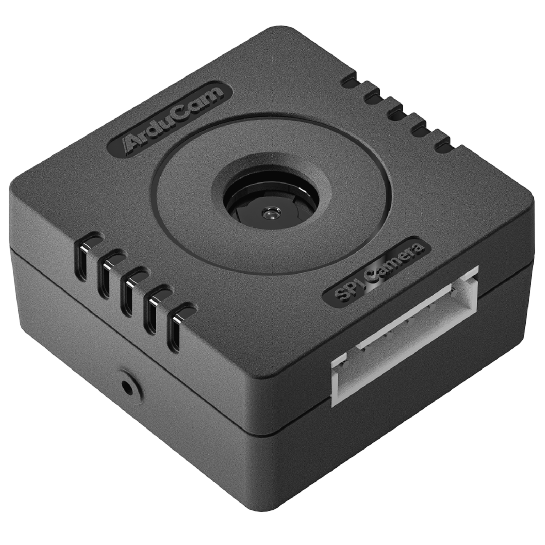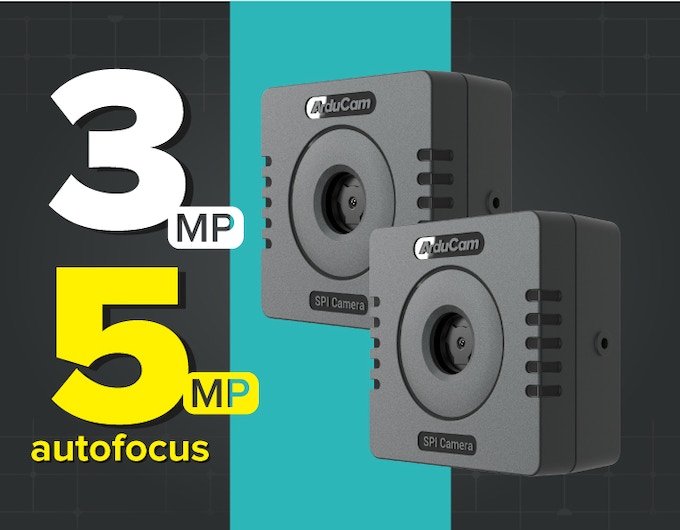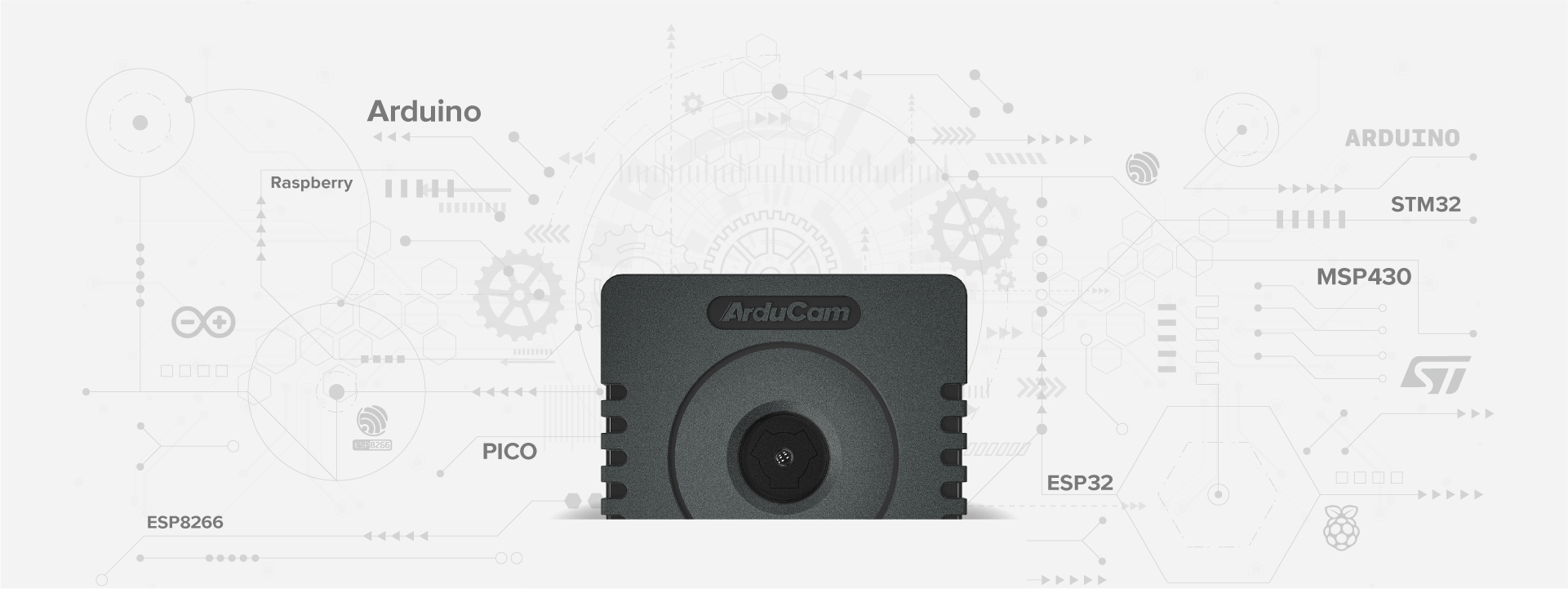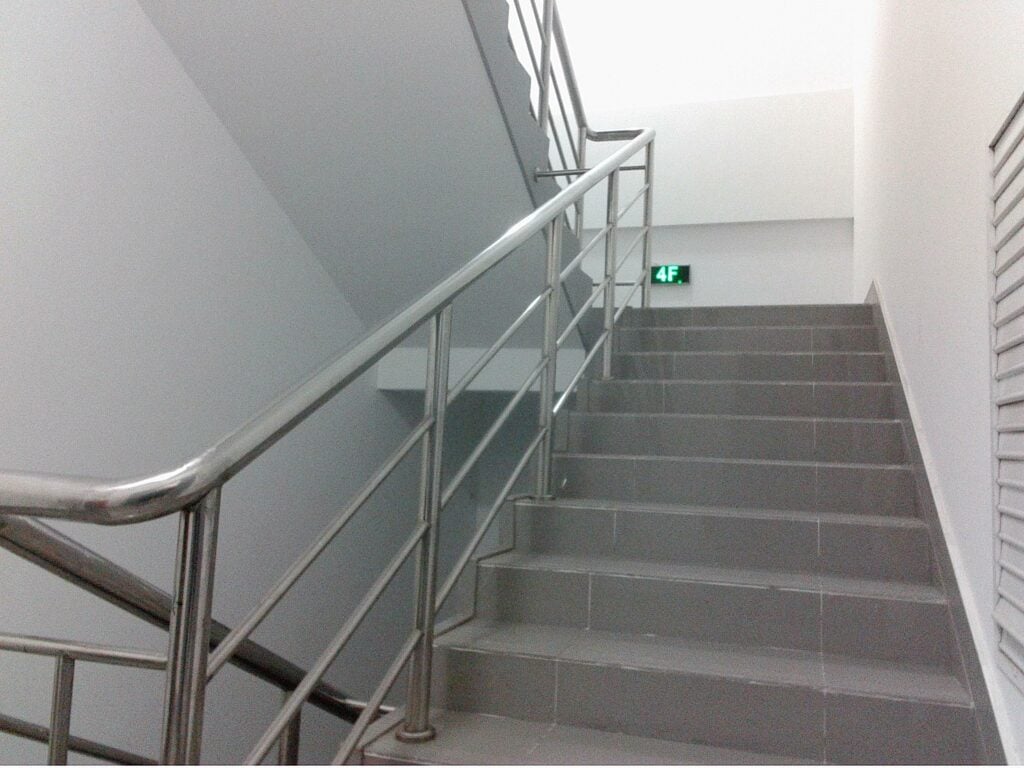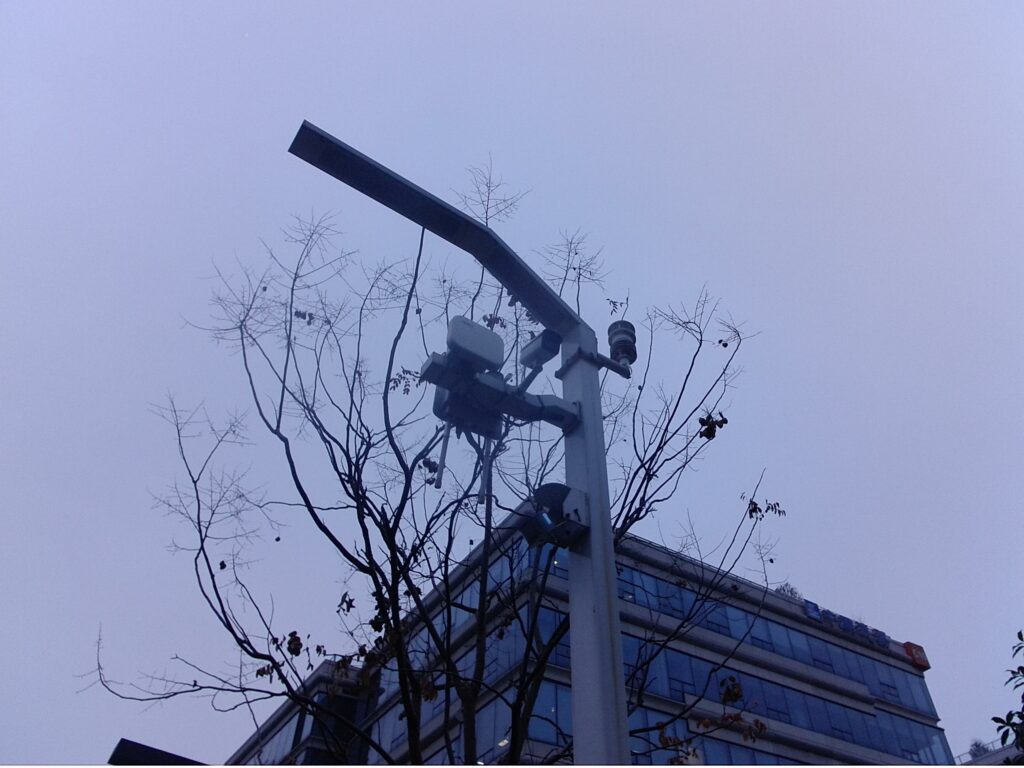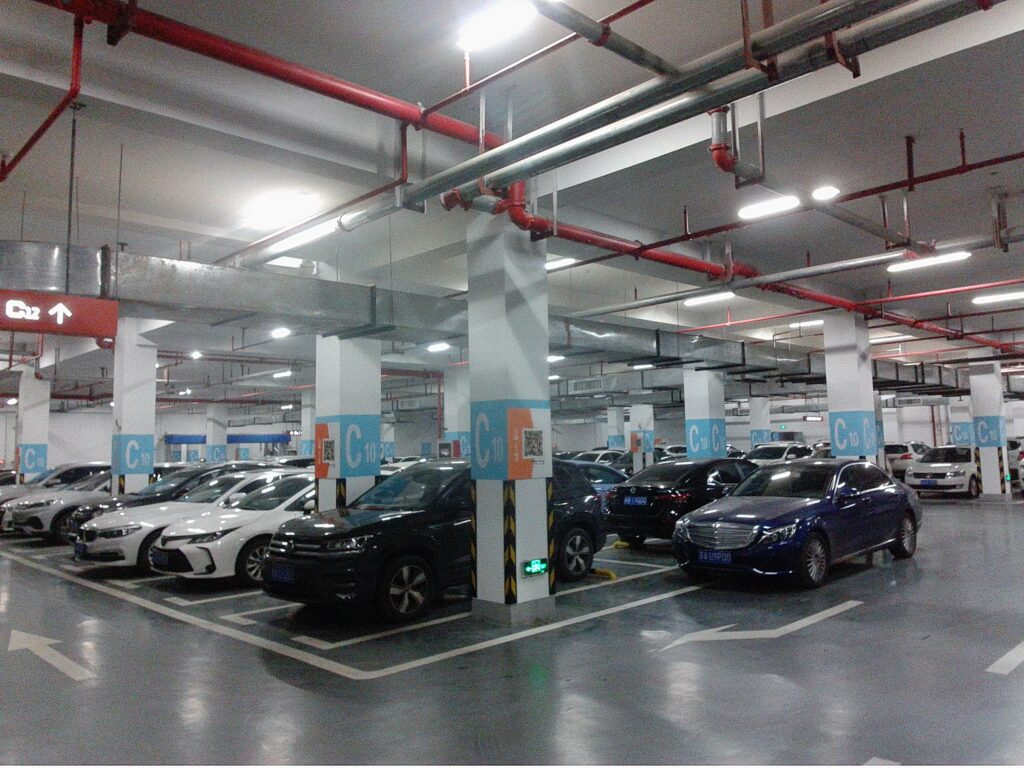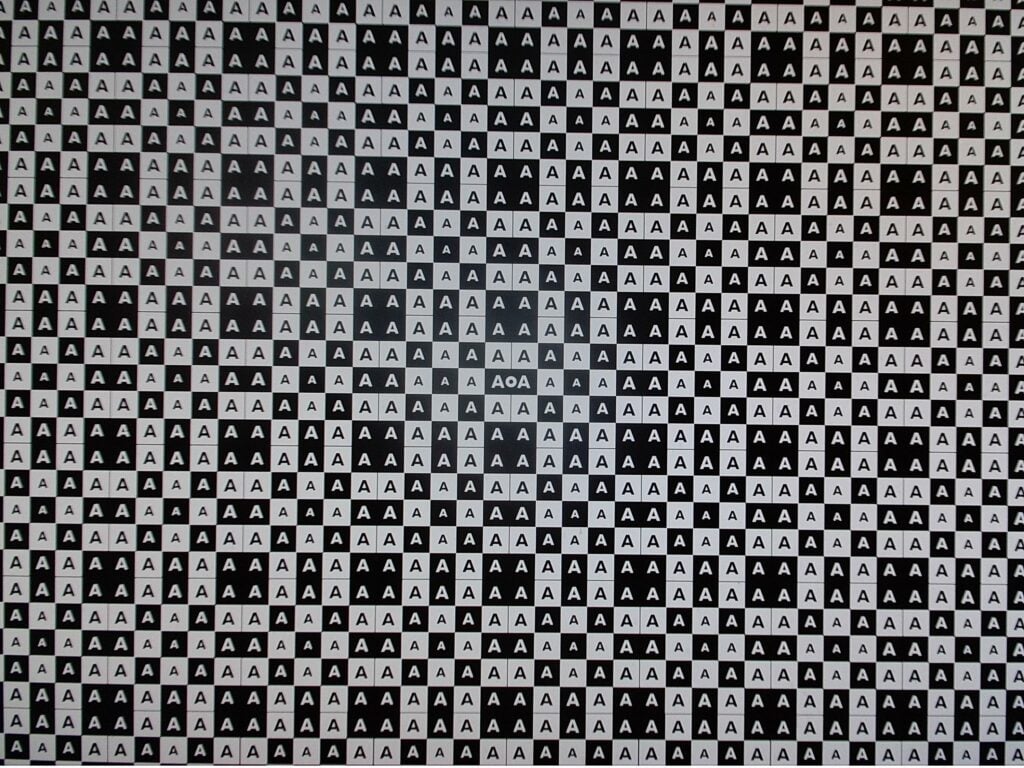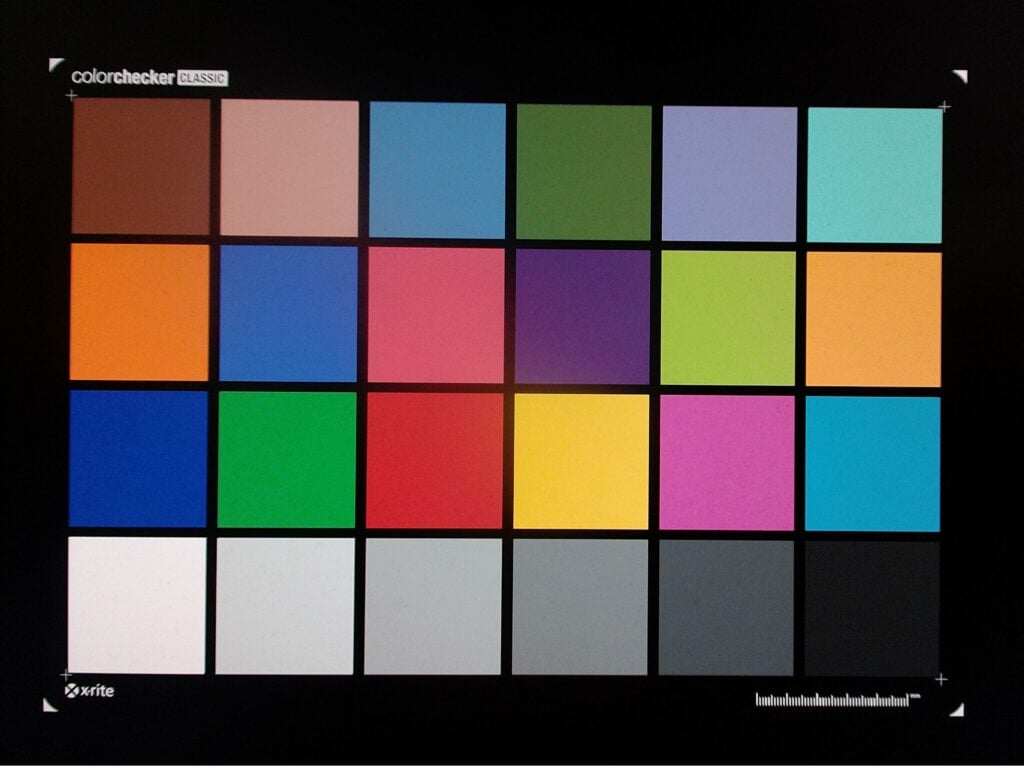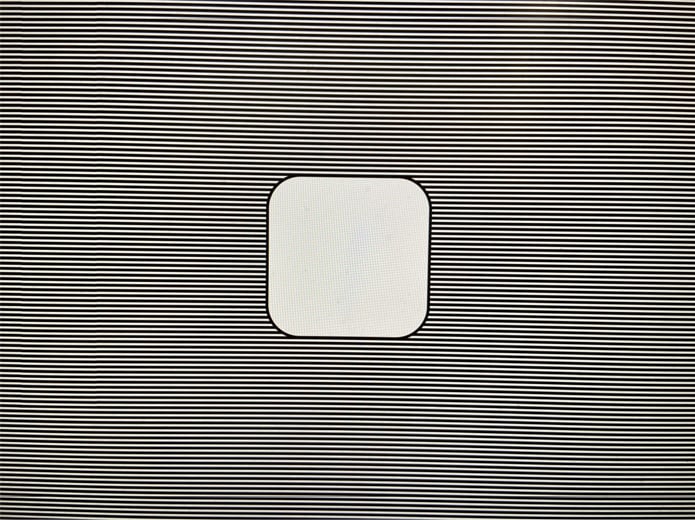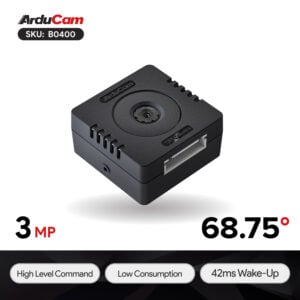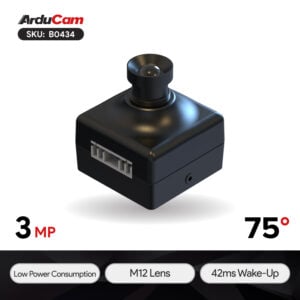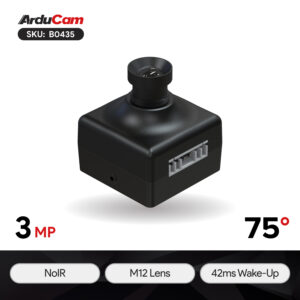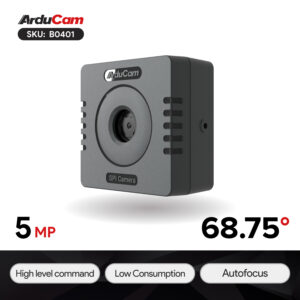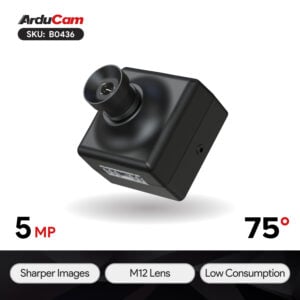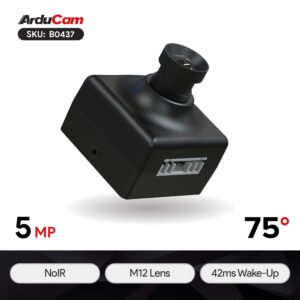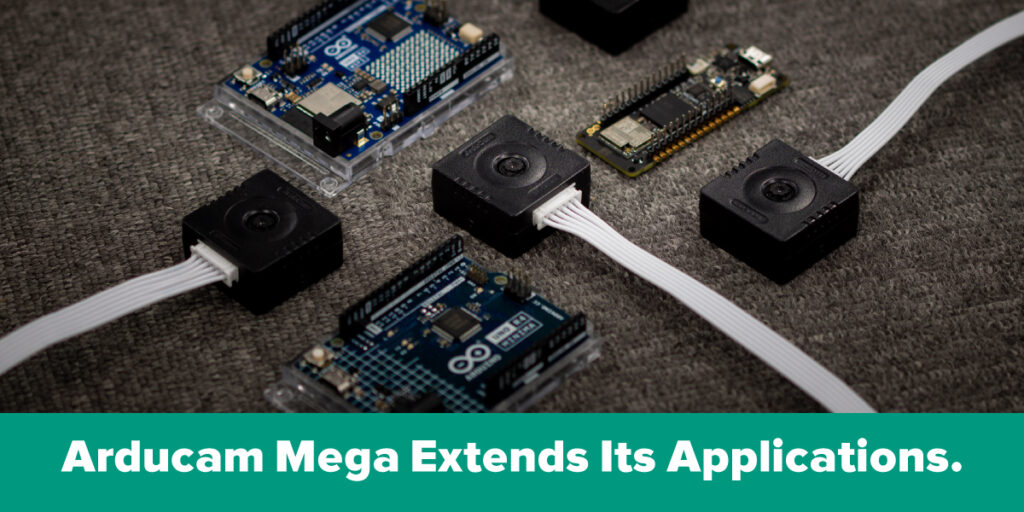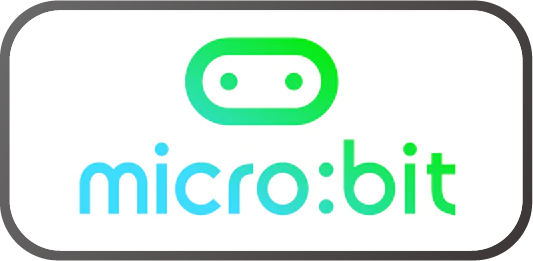That Project
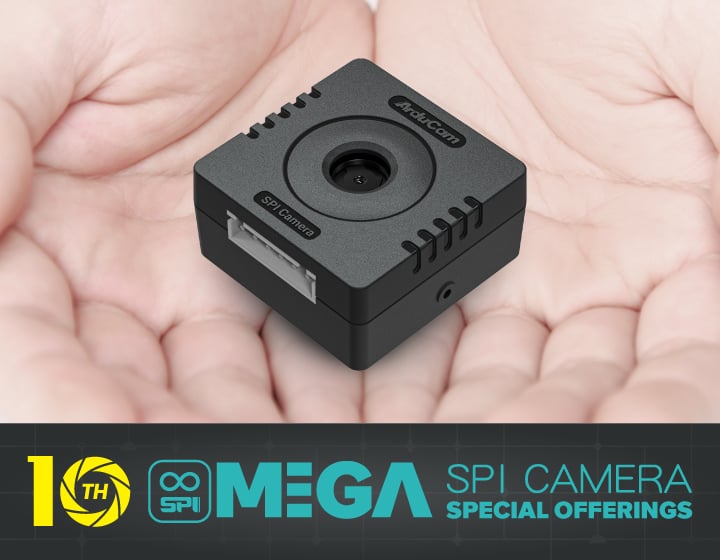
One Camera,
10 Years of Innovation.
Nobody ever thought of a camera running on an MCU until Arducam made this happen. Communities cheered for such a big breakthrough because a brand new door opened. Since then, we have spent 10 years making it better. It is time to celebrate our 10th year anniversary with this gift.
Make CV Hardware Easier.
It’s extremely easy to use, as simple as your digital cam. High-level commands were built in and in front of you only left the simplest interface. Isn’t it cool? All these are derived from our mission since a decade ago: Make Computer Vision Hardware Easier.
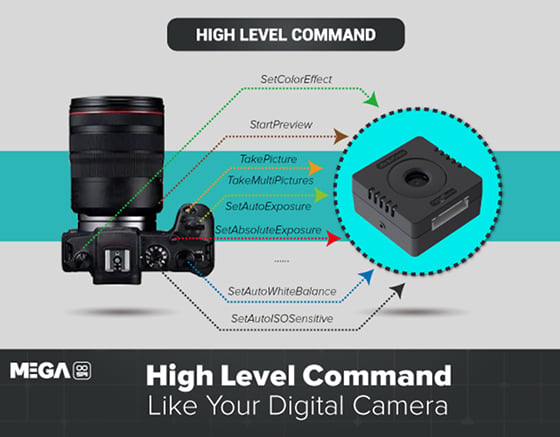
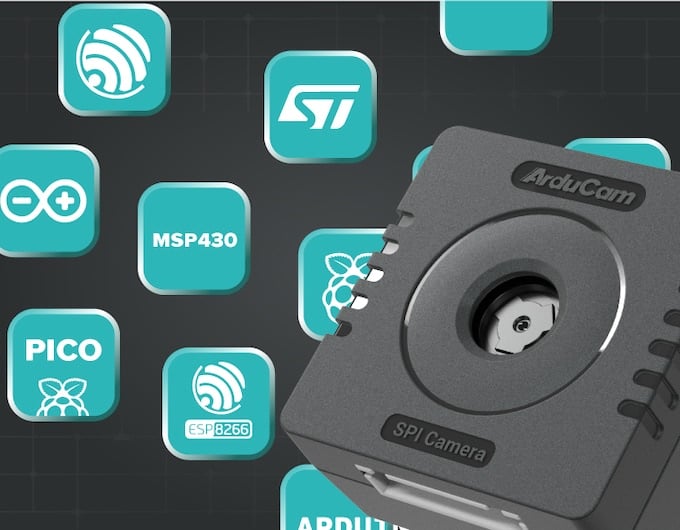
Ready,
for Any Microcontroller.
One camera for all. This is how Arducam Mega works. It fits any Microcontroller with a single standard SPI interface (either native or mimic one). 8-bit, 16-bit or 32-bit, ARM, RISC-V, or others, literally, any. Only six pins are required. No memory is needed for register settings or frame buffers. Fully compatible with 3.3 and 5V systems. Arduino, STM8/STM32, ESP8266/ESP32, MSP430, Nordic, Renesas, and countless more.
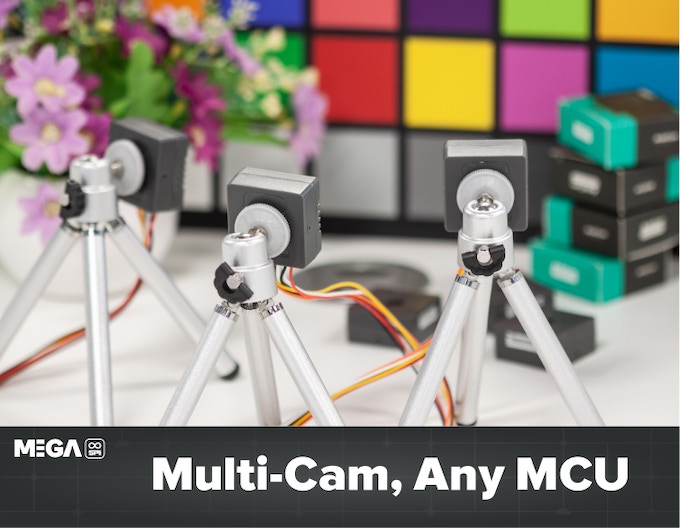
Multiplexing Made Easy.
Running high-res cameras on low-spec MCUs was nearly impossible, let alone multi-cams! We’ve broken through, however, by using a multi-camera adapter board. So yes, up to 4 cameras in a single MCU. They capture at the same time with sequential readout then.
Opensource SDK,
w/ MIT license.
The SDK is fully open-source with lean architecture with a hardware abstraction layer, which allows you to add a new MCU without effort. High-level commands enable you to manipulate the camera through API access like using a DSLR camera via button clicks. With the MIT license, you can integrate our SDK source code into your own code without any concern.

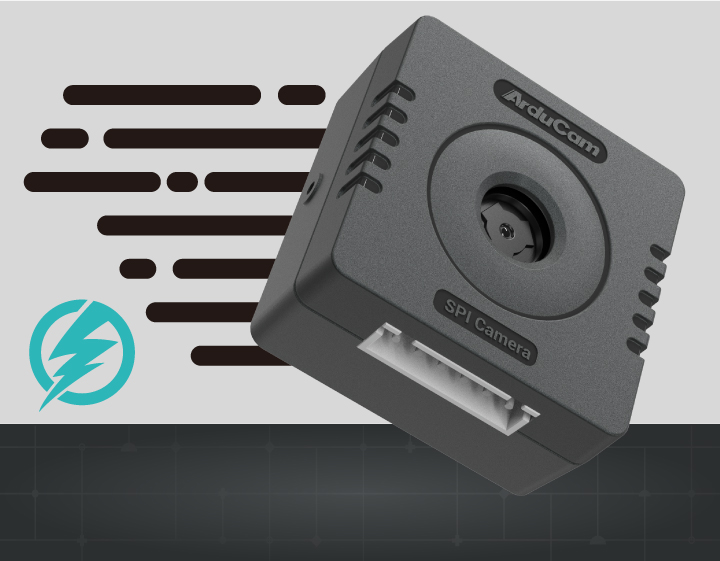
Low-Power,
Instant-On,
Extreme Power Efficient.
Energy is the key to life, power consumption is our key to success. Now you can completely switch off the camera when your MCU is sleeping, without worrying about loading long register settings. Arducam Mega cameras do it for you instantly (within 1 second) and automatically. In one word, auto-configuration, ready to shoot.
Proprietary IP in The Chip.
We put a brand-new, future-proof Arduchip in the camera, which not only gives the camera a huge performance boost, and the wakeup speed is also 10 times faster than before. And the new firmware comes with tons of optimizations to ensure compatibility, scalability, and developability.

Sample Photos
Image Performance


Critical Assets
Monitoring.
Acting day and night without rest, the new generation monitoring systems enable remote inspection of critical assets across power grids, wind farms and many others. Arducam SPI camera modules work inside to realise this. It helps increase reliability and safety as well as the reduction of operational and managerial costs. None of your critical assets will be neglected for a single second.
Wild Fire Monitoring.
In 2021, several countries saw record wildfire seasons. Most stemmed from the extreme heat and associated drought across much of the region over the past several years. To prevent such devastating disasters, we can not rely on luck. Arducam SPI cameras work inside all-whether and 24-hour running surveillance equipment, helping make your environment and the world safer.


Environmental
Observation.
Environmental changes are always going on silently but substantially, and sometimes fatal. Precautions in a constant and effective way are the key to safety. No matter it is for basic water level monitoring or for more complicated hydrological research, time-lapse cameras are ideally suited for such tasks. This is why Arducam SPI camera modules silently work inside: making a safer world around each of us, together.
Journey with CubeSats.
Arducam SPI cameras travel with CubeSats into outer space to help them keep healthy. NASA embedded the Arducam SPI camera module in its Operational Simulator for Small Satellites (NOS3). The camera modules work inside the simulators in charge of FSW data source for development and large data packet handling. Needless to say, without the superiority in both accuracy and stability, Arducam would not have been chosen.


Neighbourhood Dynamics
Well in Hand.
The world is changing and certainty makes people feel comfortable. More and more local communities are deploying smart IoT networks to provide such comfort. By using smart sensing intelligence, the networks make local residents aware of what happened nearby. Arducam SPI camera modules work inside these IoT terminals to capture a variety of dynamics that happened in car parks, streets, shops and many other public spaces.
Energy Meters,
Auto-Reading.
IoT Automation saves utility providers the expense of periodic trips to each physical location to read a meter (gas, water, electric). Apart from the cost saved, the reading is way more accurate and quicker, and the data collection is real-time. Arducam SPI cameras work inside the auto-readers made by renowned microcontroller players to help IoT Automation become true.

Check Spec at Arducam Wiki – Mega >
Getting Started with Arducam Mega >
Buy One Now
B0400
B0434
B0435
B0401
B0436
B0437
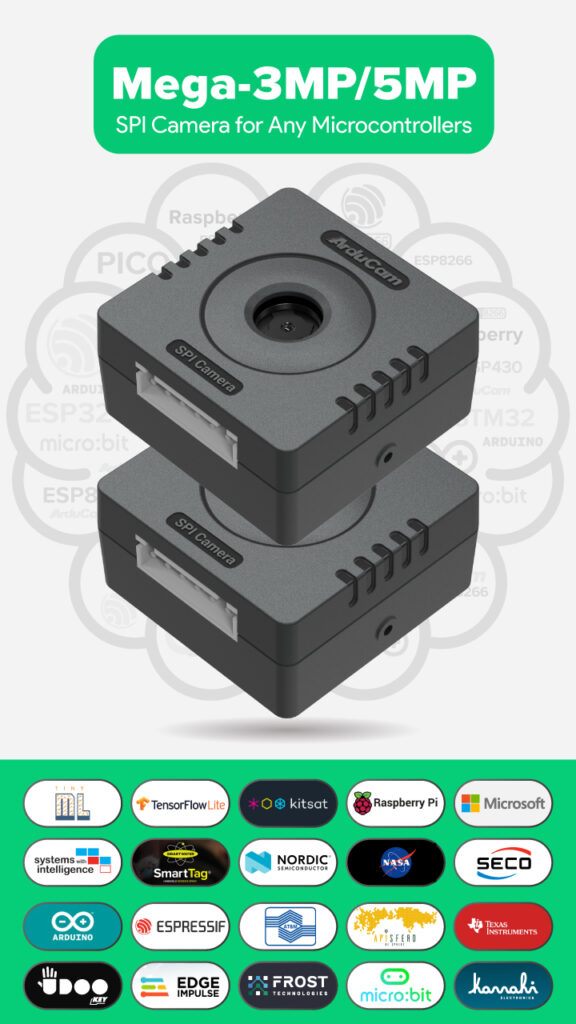
Interaction with Partners
RENESAS
At the inception of our partnership, we are thrilled to announce the successful adaptation of ArduCam Mega SPI cameras to Renesas’ powerful EK-RA6M4 board. This milestone achievement opens up a world of possibilities, combining the exceptional capabilities of our cameras with the robustness and versatility of Renesas’ microcontroller platform.
ARDUINO
For a long time, Arducam has maintained a close and active partnership with Arduino and Renesas, and the adaptation of Arducam Mega to the three platforms mentioned above reflects the close cooperation of the three parties in the embedded machine vision field. These three platforms include Arduino UNO R4 Minima, Arduino UNO R4 WIFI, and the Portenta C33.
Who We’ve Worked With
What Others Say
Novaspirit Tech
That Project
How to Electronics
Gary Explains
IoT Projects Ideas
Cytron Technologies
Scorpion Vision Ltd
Core Electronics
FAQs
Can this work with any MCU?
Yes. The Arducam Mega is compatible with any microcontroller, as long as the platform offers an SPI interface, or 4 free GPIO to mimic SPI timing.
How can we port this camera to one of our dev boards?
We provide fully open-sourced SDK and detailed application docs you can use to port the camera to any platform you want.
If you are a manufacturer and would like to work with us, please use this form.
What is the current draw of this camera?
Arducam Mega 3MP
- Idle: 48mA
- Working: 156mA
Arducam Mega 5MP
- Idle: 53mA
- Working: 126mA
Can I use it for live video streaming?
You can use low-resolution low fps to do video streaming due to the limitation of SPI speed and processing power of MCU. The purpose of this camera is for still images, not recommended for video streaming.
What’s the highest resolution we can get for still images?
The 3MP Arducam Mega: 2048 x 1536
The 5MP Arducam Mega: 2592 x 1944
Are they CCD cameras?
No, both the 3MP and 5MP Arducam Mega are CMOS cameras.
Is the SDK open sourced?
Yes, the SDK will be fully open source to everyone.
What data formats can I get with Arducam Mega?
JPEG, RGB, and YUV for still images.
Can I manually tweak everything (exposure/shutter/brightness/WB/gain/etc.)?
Yes, camera controls are all tweakable for advanced users, and our windows app offers all options.
Can I change the lens?
At the moment, no, the lens on the Arducam Mega is unalterable.
What’s the FoV of the lens?
68.75 Degrees (Diagonal).
Is autofocus only available on the 5MP Arducam Mega?
Yes, if you want autofocus, go with the 5MP. The 3MP Arducam Mega has a fixed-focus lens.
Can I get night vision out of it? Can it capture infrared?
The Arducam Mega has a built-in IR-blocking filter, so no, it can not capture Infrared. And you can not remove it without damaging the lens. For those that would like to build night vision projects with it, there may be a NoIR version in the future.
Can Arducam Mega work with the multi-camera adapter HAT?
Yes, both can work with the multiplexer HAT we built for Arducam Mini.
Can this work with RSIC-V dev boards?
If the host RSIC-V dev board’s got an SPI interface, yes.
What’s the dimension of Arducam Mega?
33x33x17 mm.


